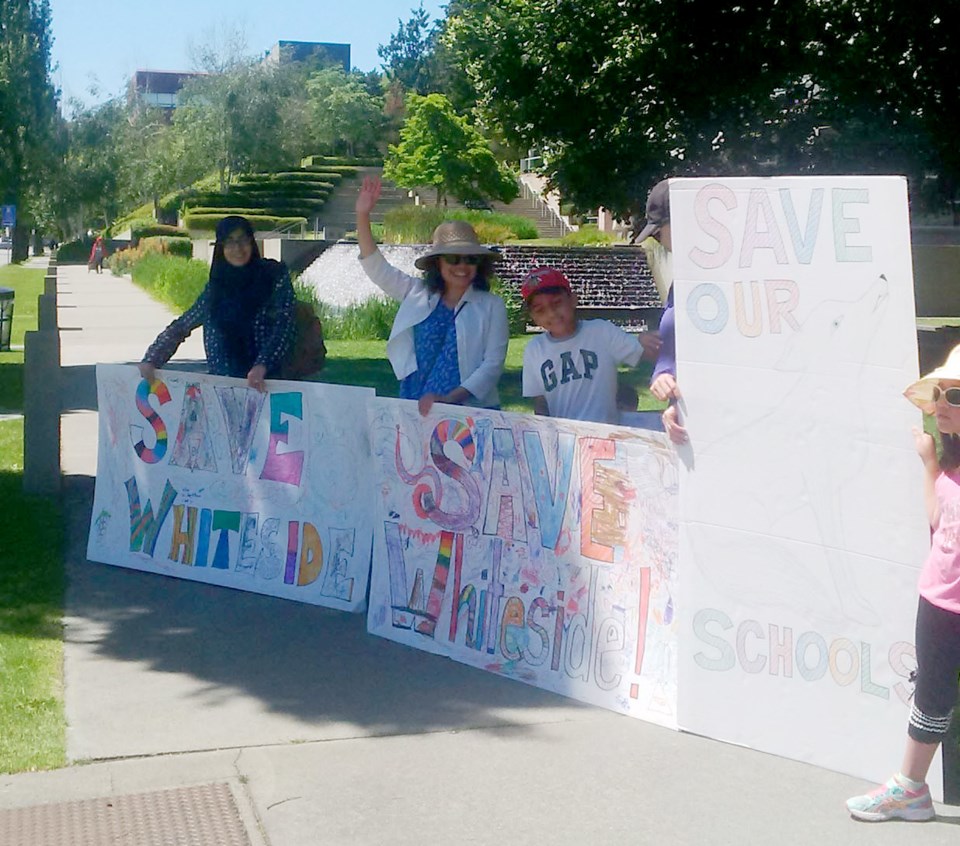With summer holidays around the corner, a gathering of about 15 parents and students of Whiteside elementary were not in a joyous mood Sunday. That’s when they protested outside Richmond City Hall the possibility their school may be closed to satisfy the provincial government’s edict to save on education funding.
Randolf Richardson, a spokesman for the group, told the News he has no idea where his daughter, who is in Grade 3, would go next September if her school is shuttered. It would also have a big negative impact on the community.
“This is one of the few schools that is closely connected with a community centre,” he said. “It has direct access for the children who can walk in groups to the South Arm Community Centre where there is after-school care.
“There are no major roads to cross and it’s in such a great setting that lends itself to field trips to discover nature,” he added. “And when you’re in that kind of setting and relaxed, it’s much easier to learn than being in a crowded school in the heart of the city.”
While parents and students held up hand-made signs decrying school closures, Richardson said it was heartwarming to hear supportive comments from some passersby.
“Some told us they went to Whiteside and would not like to see it closed,” he said.
The pending school closures stem from the Ministry of Education’s policy to increase the occupancy rate of B.C.’s school districts to about 95 per cent. Districts reaching that range are expected to qualify to receive funds for required seismic upgrades, while those schools deemed uneconomical to operate are to be closed. In Richmond, that could involve as many as five schools from a list of 16, including Whiteside.
But while none have been specifically named, parents such as Richardson have been on the offensive, touting reasons why their school should remain open.
“That’s a very negative situation we’ve been placed in,” he said, “pitting schools against each other.”
He also said the idea of upping the occupancy to 95 per cent is unrealistic.
“That takes a lot of flexibility out of the (school) system. You need some kind of contingency,” he said. “What if a school suffers a broken water main? Those students would need to go somewhere while repairs are being done. Ninety-five per cent is too high.”



